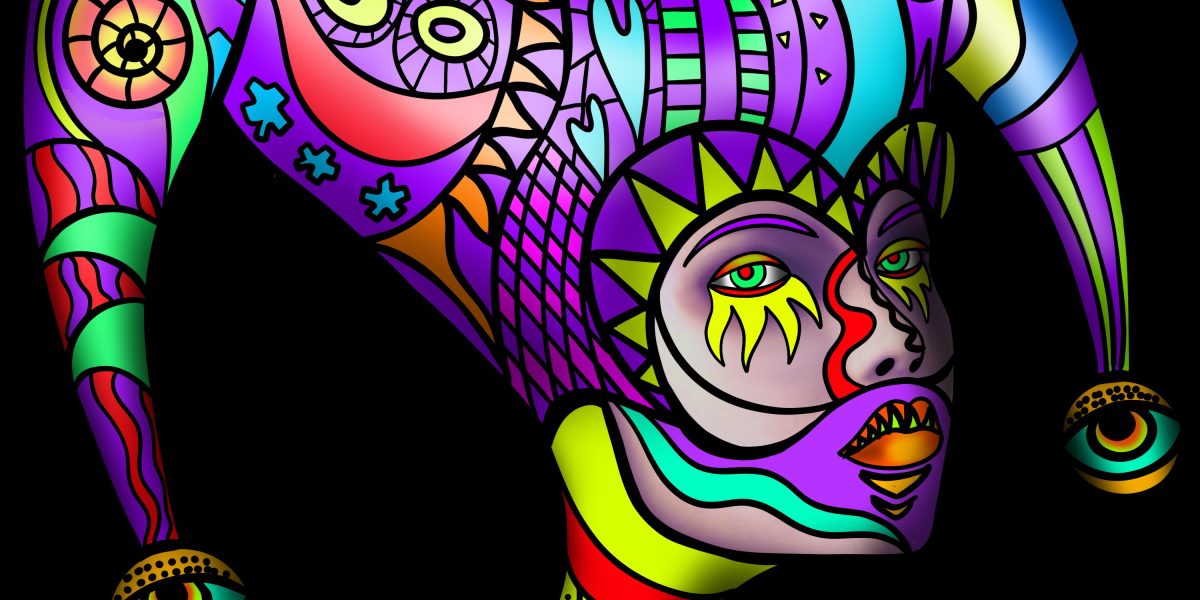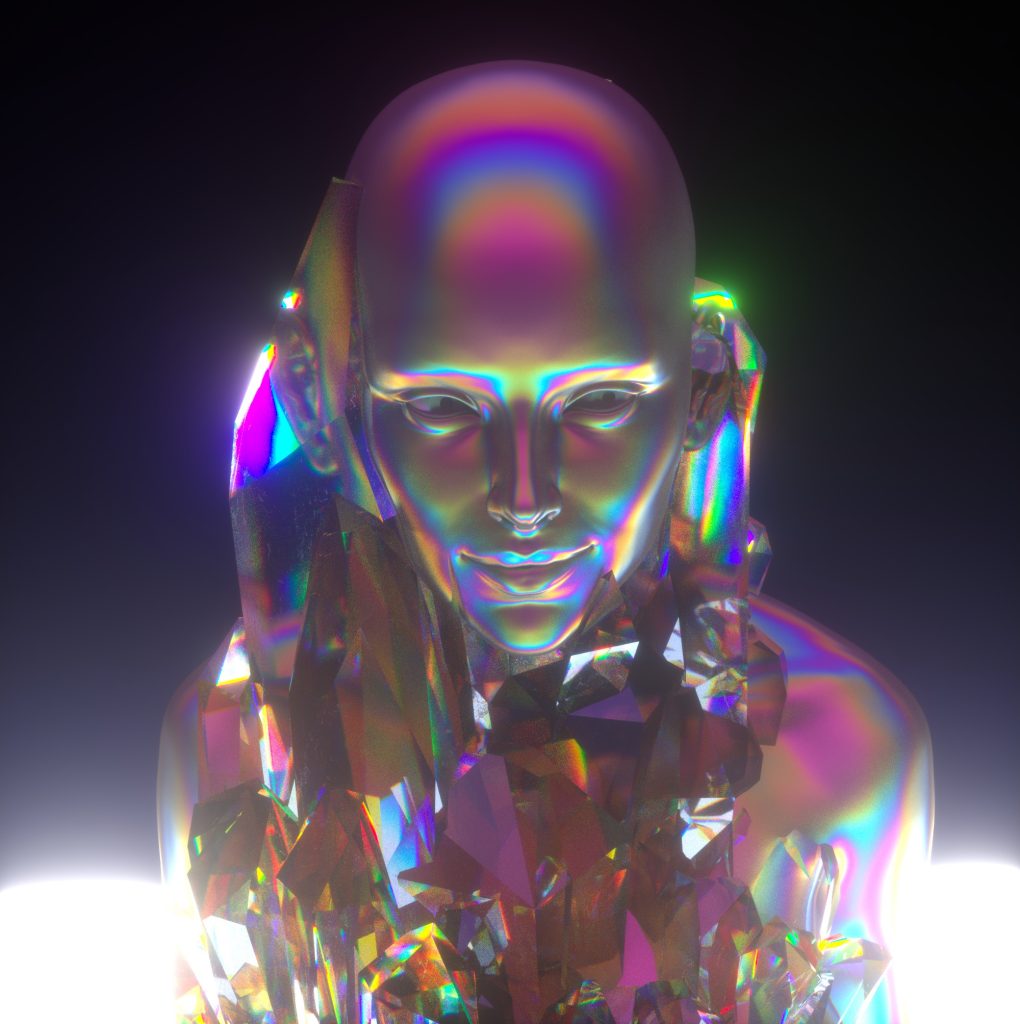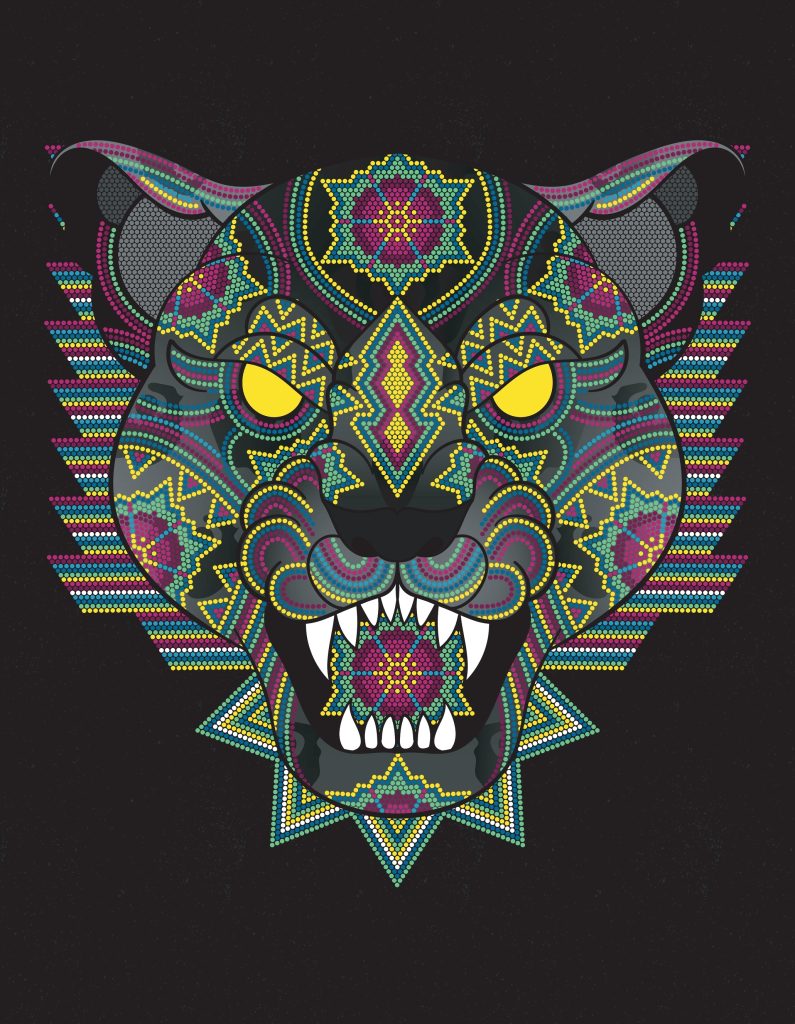
in this article
- Reports of DMT Jesters Are Becoming Increasingly Common
- How DMT Lore Influences Encounters with Entities
Are you 18 or older?
Please confirm that your are 18 years of age or older.
You are not allowed to access the page.

Disclaimer: The views and opinions expressed in this article are those of the authors and do not necessarily reflect the official policy or position of the Chemical Collective or any associated parties.
One of the most popular blog posts on my site is my essay on DMT jesters and tricksters (a modified version of it became one of the essays in my new book, which includes a new section about my personal experiences). Several people commented on my blog post to say they have also encountered jester entities. The perspective offered in that post is predominantly a Jungian one: I analyse these entity encounters through the lens of Jung’s theory of archetypes. In other words, the archetype of the trickster – a widespread and perhaps universal pattern/idea in human cultures – explains why encounters with tricksterish entities are so common.
However, in that post, I also explore the idea that it is the expectation of seeing a certain type of entity – i.e. a jester/trickster-type entity – that influences the encounters that occur. I would like to delve a bit deeper into this kind of explanation, as I now tend to think that expectations play a feasibly strong role in common (and increasingly common) reports of meeting DMT jesters.
Jungian archetypes may play a role too, but the purported nature and existence of these archetypes – as inherited, neatly delineated mental patterns – has been met with various criticisms. Both expectations and existing ‘archetypes’ – which may be common and learnt, rather than inherited – could work together to make encounters with DMT jesters more common over time.
I’ve definitely noticed an uptick in DMT trip reports that mention encounters with DMT jesters. You can find plenty of these personal accounts on r/DMT. Alongside these increasingly common trip reports, more articles, YouTube videos, and artwork related to DMT jesters have emerged. Could this increase in DMT jester encounters just be related to more people using DMT, meaning that more people are accessing the trickster archetype lodged in their unconscious?

To begin with, we do not have very recent data on how the prevalence of DMT use has changed over the years. Between 2007/08 and 2013/14, the prevalence of DMT and other tryptamine use increased from 0.2% to 0.7%. This is among a nationally representative sample of young adults in the US. According to data obtained from the 2013 Global Drug Survey (which is more likely to attract drug users), lifetime prevalence of DMT use was 8.9% and past year prevalence was 5%. The authors of this research underscore, “[DMT] had a larger proportion of new users compared with the other substances (24%), suggesting its popularity may increase.”
However, the 2021 Global Drug Survey did not illustrate this increase in popularity: lifetime prevalence remained at 8.9%, while past year prevalence dropped to 4.3%. It’s possible that DMT’s popularity has increased since then (results from the 2024 Global Drug Survey may reveal this), which could be related to more DMT-related research, books, and online content, as well as greater availability of the drug in the black market. But this rise in use may not be that significant – and whatever increase there may be (if there is one at all), it might not fully account for the increase in DMT jester trip reports. Instead, the widely accepted, tried-and-tested influence of ‘set and setting’ could be what’s mostly accounting for this trend.
‘Set and setting’, as most psychonauts know, refers to the fact that one’s mindset (i.e. ‘set’) and the environment where one trips (i.e. ‘setting’) can play a major role in the content and quality of the psychedelic experience. One aspect of set, relevant to DMT entity encounters, is expectations surrounding a ‘typical’ or ‘normal’ psychedelic experience. In the case of DMT, this would include the type of entities one encounters during the experience. It has been speculated that Terence McKenna’s widely popular accounts of ‘DMT machine elves’ led psychonauts to expect to see such entities when they smoked DMT, and so they did.
In my essay on DMT jesters, I note that elf-like entities had been encountered in the DMT space before McKenna’s trip reports existed, and many DMT users have met such entities without being exposed to McKenna; although it is possible they heard mention of DMT elves before using the substance. Nonetheless, even if people have met elves or elf-like entities in the DMT realm independent of reading or hearing trip reports featuring these entities, this doesn’t discount the strong influence of set and setting.
It’s been recognised that culture (e.g. pre-existing cultural and religious beliefs) can influence altered states of consciousness, including the types of beings and spirits one encounters, as well as the kinds of insights and visions one has. For example, in terms of mystical experiences, Christians are more likely to see images of Christ and the Virgin Mary, whereas Buddhists are more likely to envision the image of the Buddha. On the other hand, non-Christians and non-Buddhists can see images of Christ and the Buddha as well, which could also be related to the knowledge that meeting spiritual personages during mystical states is possible.
With this in mind, it would not be that surprising to find that beliefs surrounding DMT (in psychedelic circles) would increase the likelihood of meeting one type of entity, namely, jester-type entities. Similarly, in the case of ayahuasca (the orally active form of DMT), certain entities or images are commonly reported: motherly or grandmotherly beings or presences, snakes, and jaguars. Rather than this being related to the ‘essence’ of DMT plus the MAOI compounds contained in ayahuasca, this is more likely tied to the cultural beliefs and expectations surrounding ayahuasca. After all, users know ayahuasca comes from the Amazon jungle (a place that one associates with animals like snakes and jaguars); many people use it in the setting of the jungle; and ayahuasca retreats and Indigenous tribes often mention serpent and jaguar spirits in the context of the ayahuasca experience.

To me, it seems more plausible that a type of entity encountered more commonly in the DMT space than the ayahuasca one – and vice versa – is related to pre-existing assumptions about both experiences, rather than something inherently ‘jester-prone’ about pure DMT or something ‘jaguar-prone’ about DMT and MAOI in combination. But perhaps there is a missing piece of the puzzle that has not yet been found: there could be a reason that the kind of subjective experience produced by DMT or ayahuasca is more likely to manifest some types of entities rather than others.
In any case, it is worth noting that widely viewed and shared content on DMT jesters has preceded the increase in DMT jester trip reports. One example is Joe Rogan talking about meeting DMT jesters on a 2020 episode of his podcast, which he has talked about on more than one occasion. He said, “One time I did [DMT], and all these jesters, like a geometric pattern of jesters… were giving me the finger, like this: ‘Fuck youuuuuu.’ Like, mocking me. And the message that I got was I was taking myself too seriously.” Interestingly, that is the common message of the DMT jester I highlight in my essay on the subject. At the risk of coming across as self-important, I have wondered too whether my essay played a role in giving some users an expectation about meeting DMT jesters, leading them to encounter them. (That essay was, for some years, the top Google search result when searching ‘DMT jester’ or similar keywords; and it’s also been shared widely online.)
Those uninitiated to the DMT realm often prepare for the experience by reading trip reports and doing research into the experience. This is common (and often encouraged) before trying a psychedelic substance for the first time. Yet through this exposure, one is building up a set of assumptions about what a typical DMT experience is like. Through in-person discussions, Google and YouTube searches, and forum browsing, it wouldn’t be that hard to come across mentions of DMT jesters. If the expectation about meeting this kind of entity exists pre-trip, then it could drive the manifestation of that very entity. In this case, a Jungian interpretation of the experience could be a post-hoc rationalisation – a way of making sense of what occurred with a Jungian framework in mind, even though the entity encounter may not be related to an unconscious archetype bursting forth into awareness.
Nevertheless, as already suggested, it may be that jester entity encounters are (at least sometimes) a mental mixture of expectations and archetypes. And this could occur without the (perhaps controversial) assumption that these archetypes are innate and heritable. For example, independent of awareness of DMT jester trip reports, one may already hold assumptions about what jesters (or similar figures like clowns) represent. If you associate jesters with the trickster archetype – an archetype that could be taught and learnt, rather than inherited – then these associations could mingle with your expectations surrounding the DMT experience. In this way, one encounters the expected entity (e.g. it manifests typical jester garb and colours), and the entity acts in an archetypically tricksterish way (e.g. it exhibits cheeky, silly, jokey, playful, and pranksterish behaviour).
However, much remains uncertain about what exactly accounts for DMT entity encounters. Research in the future could help determine the factors that influence them, but currently, many users are convinced that common encounters point to a common (but hidden) reality that DMT gives us access to. For the more sceptically-minded, referring to human psychology is seen as a more parsimonious way to explain meetings with jester entities. This debate on the nature of DMT entities is still very much alive and well in the psychedelic community.
Sam Woolfe | Community Blogger at Chemical Collective | www.samwoolfe.com
Sam is one of our community bloggers here at Chemical Collective. If you’re interested in joining our blogging team and getting paid to write about subjects you’re passionate about, please reach out to David via email at blog@chemical-collective.com

Welcome to Chemical Collective.
Create an account to earn 200 welcome points.
Already have an account? Sign in


Check out our Community Blog and get involved with the conversation. You will be awarded 50 x ChemCoins for each comment up to a limit of 250 total ChemCoins.


Have you purchased any of our products? Reviews and reports are so important to the community. Share your honest opinion, and we’ll reward you with 50 ChemCoins for each review!


Every time you complete an order with us, you’ll be awarded ChemCoins for each Euro spent.
Welcome to Chemical Collective.
Create an account to earn 200 welcome points.
Already have an account? Sign in

Earn commission every time someone makes a purchase through your link.
When you become an affiliate, you will be allocated a unique link to share with your friends, followers, subscribers, or Aunt Susan.
You can choose to payout the commission earned once per month, or save it up to receive on a rainy day! Commission earned is 5% of the total order value per referral.
Contact us to join the Chemical Collective family and become an affiliate.
share your toughts
Join the Conversation.
I experienced the jester with 0 expectation. I had never even heard of it being a thing. But it was clear a day, a spider that transformed into a jester laughing at me as I was in the geometric webs asking “why are you here?” As if I had no reason to be. Then it turned into a snake and was crying when I mentioned “God” in which an all powerful force that was space itself all around sent a awe invoking vibration